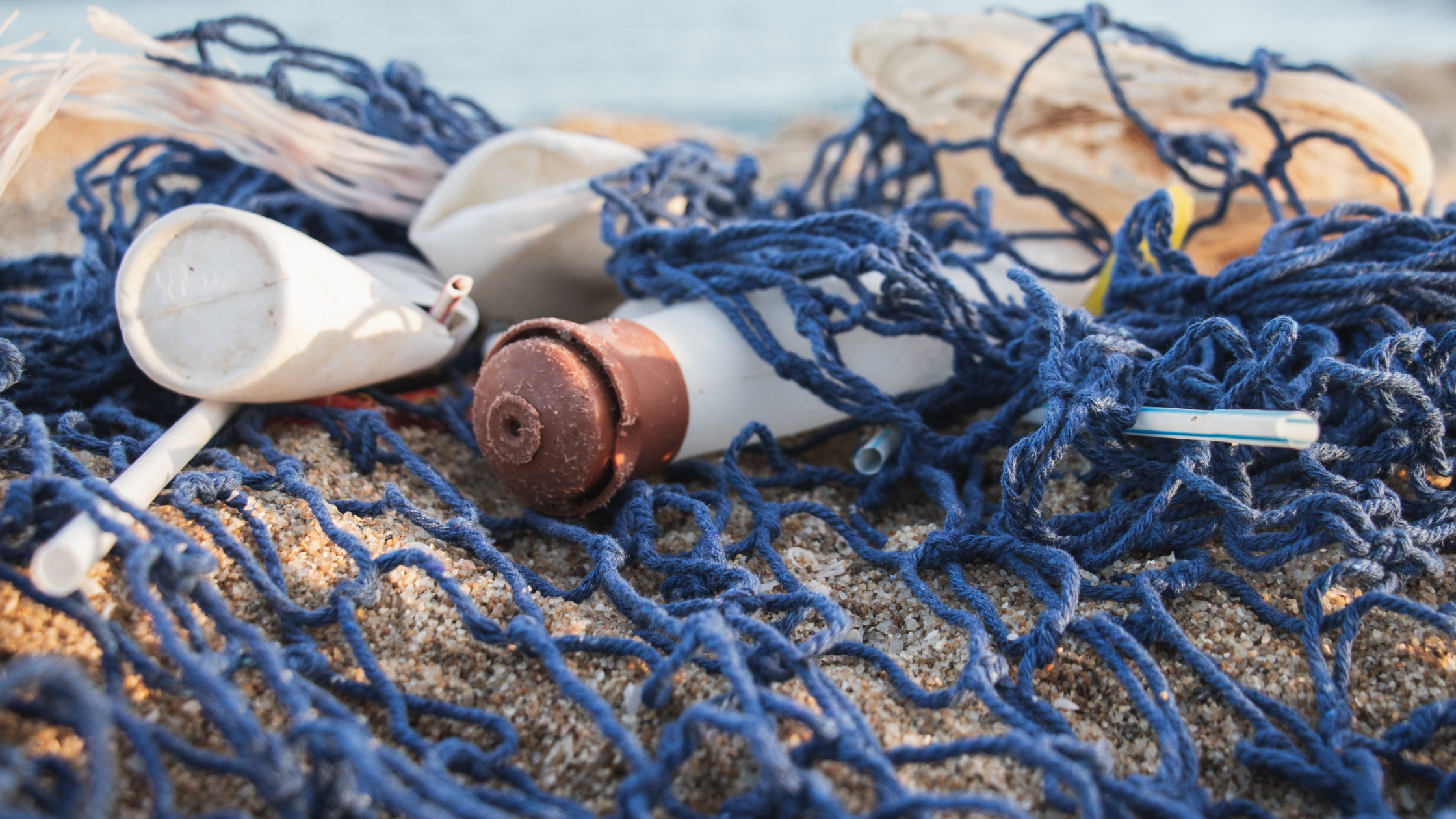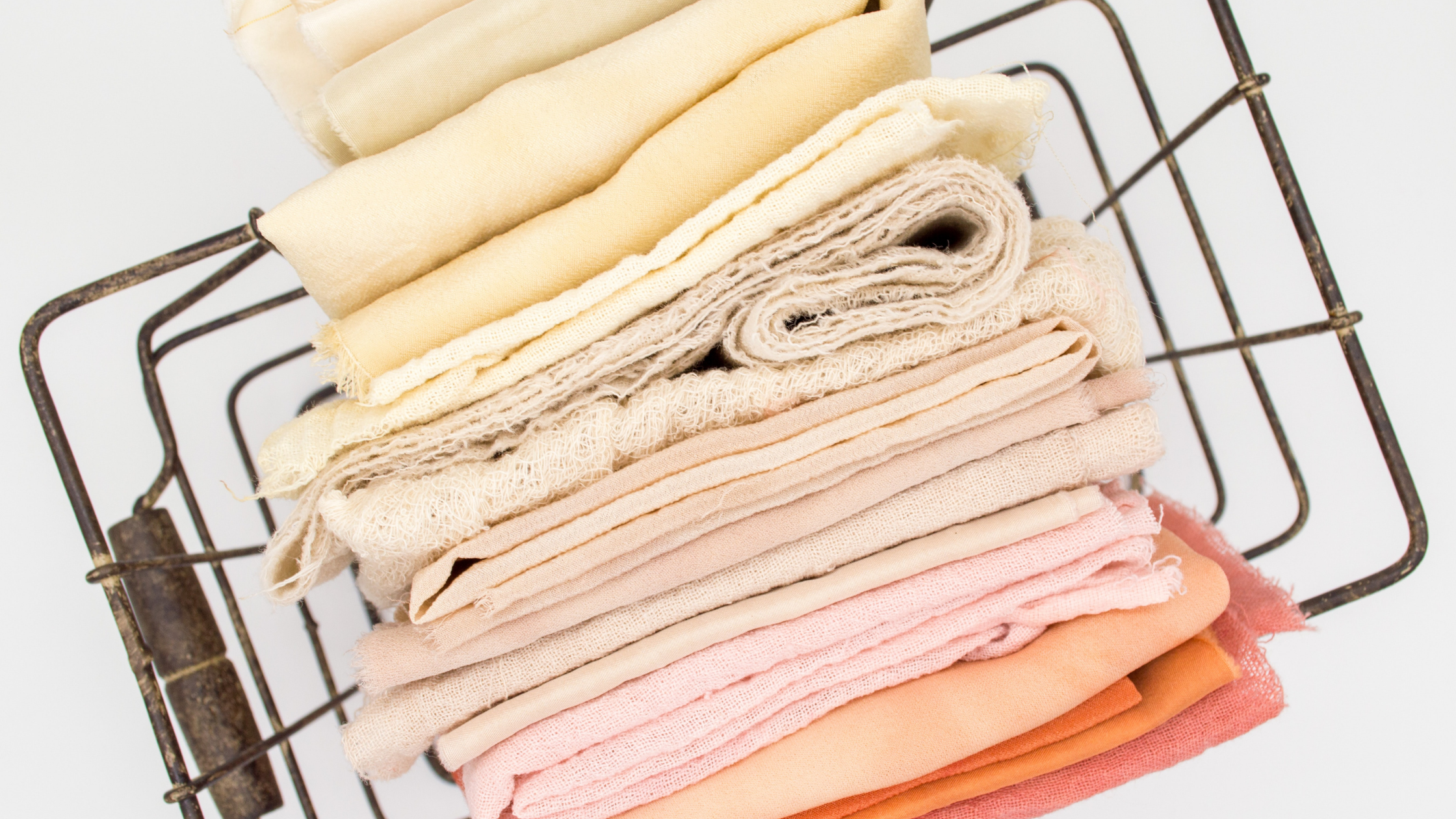
If you’re looking to learn more about the most sustainable fabrics for your new eco-friendly wardrobe, you’re in luck! We’ve made the subject a lot clearer and tackled all your sustainable fabrics questions as well as compiled a comprehensive list of the most and least sustainable fabrics on the market today.
Check out each sustainable fabric’s features and find the eco-friendly fabric that fits your look best.
What are Sustainable Fabrics?
A fabric’s materials and fibre properties, it’s production process, and it’s biodegradability all factor into how sustainable that fabric is for the planet. Sustainable fabrics are those made from natural and earth-friendly materials that actively reduce harm to the planet, or have a small overall environmental impact.
Sustainable products are those that:
- Require little water during material growth and production
- Require little energy during material growth and production
- Are made from waste or recycled material
- Are made from renewable resources
- Use a small and controlled amount of chemicals during production
- Are void of GMO materials
- Cause no soil erosion
Fabrics that have a notably negative environmental impact, on the other hand, tick some of the following boxes:
- High water need during production
- High energy need during production
- Made from non-renewable sources
- Made using harmful chemicals
- Use of GMOs
- Materials cause soil erosion
- Materials cause rainforest destruction
 Which Fabrics are Most Sustainable?
Which Fabrics are Most Sustainable?
Every fabric has some effect on the environment, but these 10 fabrics leave the smallest footprint.
1. Recycled Polyester
Recycling material for fabric can have great ecological benefits. It takes half the energy to make, and it reduces oceanic waste. For example, 12 plastic bottles are used in the making of our rash vests. These plastic bottles were either ocean bound or reclaimed from ocean waste.
2. Organic or Recycled Cotton
The most sustainable cotton is the kind made from post-industrial and post-consumer waste. Recycled cotton uses far less water and energy in production compared to conventional cotton. If cotton is organic, it’s grown without the harmful pesticides and produced without the dangerous chemicals common in conventional cotton clothing. Cotton in natural colors also has a lower pollution impact.
2. Hemp
Hemp is a hearty, drought resistant crop. It requires only around half the water as cotton and can thrive in a variety of soils. Because the plant grows densely, it chokes out other competing plants, so hemp requires no herbicides or pesticides. It’s deep roots prevent soil erosion and also aerate the ground, leaving it rich and ready for the next crop. Hemp is finally biodegradable and breaks down easily, which creates less waste.
4. Linen
One of the world’s oldest known fabrics, linen has been traditionally made from the stem of flax plants. Flax requires very little water and less pesticides to grow than cotton. The plants also have a high rate of carbon absorption. One hectare of flax can remove 3.7 tonnes of CO2 from the atmosphere. The process of turning flax into linen is simple and chemical-free. The resulting fabric is also fully biodegradable when left untreated.
5. Econyl
This new product was made to offer a more sustainable option to nylon. While Econyl can release small particles when washed, this recycled plastic fabric is perfect for items that do not need to be washed, like purses, shoes, or luggage.
6. Nettle Fibers
The widely distributed and easy-to-grow stinging nettle has gained attention for its sustainable potential. The plant’s flexible and shiny fibres have been used to make clothes and yarns for the past two centuries, but only recently has it joined the conversation around sustainable fabrics.
7. Lyocell (or Tencel)
Lyocell is made from the quickly-growing eucalyptus tree. It uses just one-third of the water needed to produce rayon (a chemical-heavy material made from dissolved plant cells). The non-toxic solvents used to create Lycoell can be recycled too, reducing the release of dangerous chemicals into the environment. After discarding, Lyocell is biodegradable.
8. Bamboo
Because bamboo is such a fast-growing crop, it’s been noted for its sustainability. As a plant, bamboo is naturally pest resistant, biodegradable, antifungal, and antibacterial. Like grass, it grows again after being cut, making it a very profitable crop. But here’s the caveat: bamboo fabric can be bad for the environment when it is chemically processed. Look for brands that are transparent about the origin and manufacturing when buying this material.
What are the least sustainable fabrics that are worst for the environment?
While no fabric is fully sustainable, some do much more damage than others. Here’s the list of fabrics to avoid or minimise in your closet to protect the planet.
- Polyester Polyurethane
- Sequins
- Polyamide
- Nylon
- Elastane, Spandex, or Lycra
- Acrylic

Eco-Friendly After-Care
The energy, water, and chemicals used when we run our washers and dryers can have a negative impact on the environment as well. Additionally, when we wash synthetic fabrics, like polyester, nylon, and acrylic, thousands of synthetic fibres are shed from the clothing and released into the water. These fibers eventually make their way into our waterways, oceans, and even tap water.
To go green in your washing machine, try out the Guppyfriend that captures microfibers from your clothes. Use a concentrated detergent or one that is readily biodegradable, is plant-based instead of petroleum-based, and phosphate-free. Wash with cold water. Then hang clothes to dry, or use the moisture sensor on your dryer to keep it from running longer than necessary.
Sustainable After-Sale
Some fabric producers and fashion brands can also impact the environment after a sale is made. To have the biggest positive impact on our environment, support companies that are financially pouring back into the planet.
For example, at OceanЯ, we partner with Plant-for-the-Planet to make sure our company is completely carbon neutral. A portion of our sales also supports eco-programs like the coral reef protection at Tengah Island Conservation and marine environment protection at Enaleia. All our emissions are offset by planting trees on the Yucatan Peninsula. Tengah Island Conservation and Enaleia = non-profits we support.
Take A Sustainable Sneak Peek Behind Your Seams
At OceanЯ, we’re passionate about designing and supplying eco-friendly apparel. If you’re just tapping into the topic of sustainable fabrics, head over to our site, peruse our products, and see how easy it is to make the switch.

 Which Fabrics are Most Sustainable?
Which Fabrics are Most Sustainable?